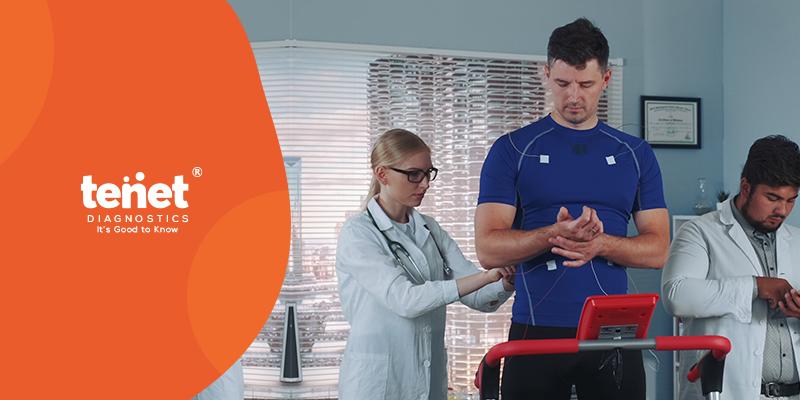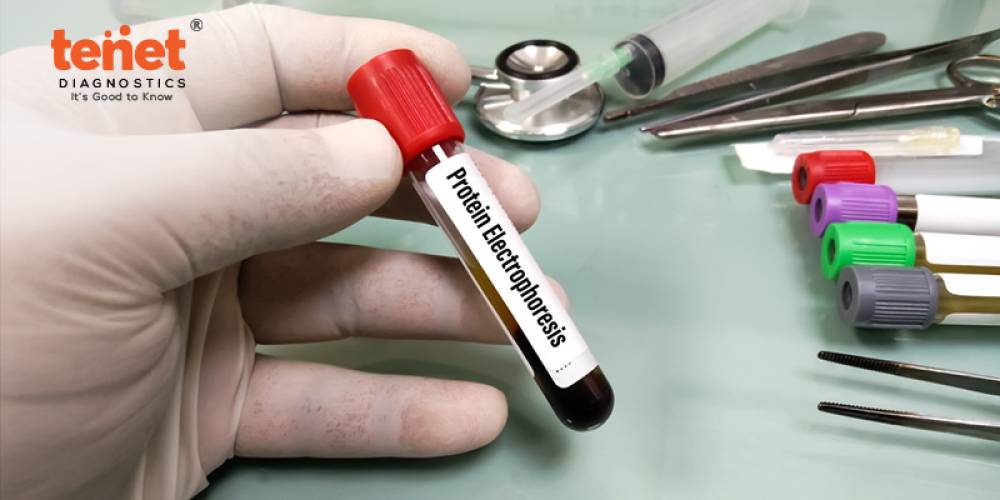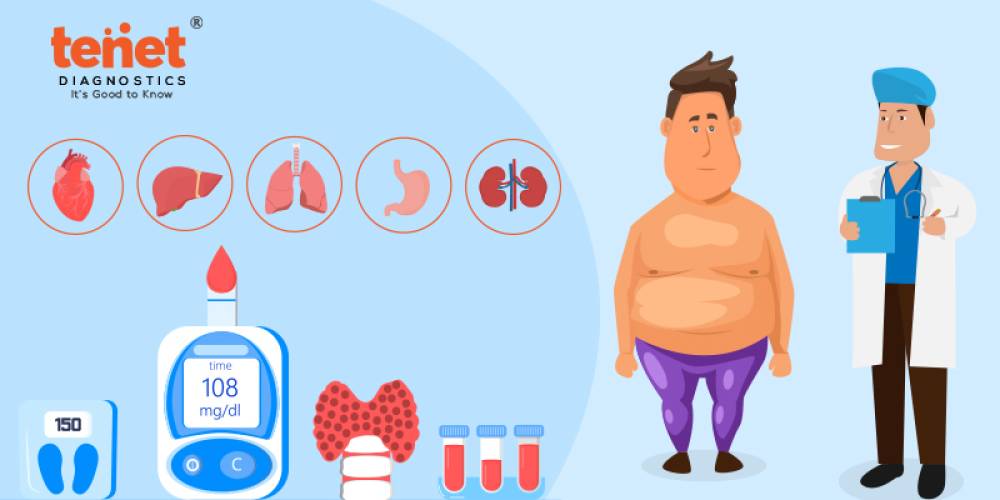A healthy heart is essential for the proper functioning the body's organs. The significant factors that impact heart health include increased stress among people and changes in their lifestyles and diets. The TMT test (the treadmill test) is used to evaluate heart function in persons with diabetes who are at risk for heart disease, have a past of heart disease, or have undergone cardiac treatment.
The TMT test (the treadmill test) or exercise stress test determines how far your heart can run before experiencing irregular heart rhythms or decreased blood supply to the heart muscle. Doctors use it to monitor your heart's response to being pushed to a specific amount. Seek a TMT test near me and choose the best Diagnostic centre which provides cutting-edge technology and competent lab employees to perform treadmill testing quickly and appropriately.
Why is the TMT test needed for the heart?

An exercise ECG (electrocardiogram) or a cardiac stress test is often known as a treadmill test (TMT). The treadmill test is a standard procedure used to determine the following:
• How well your heart pumps blood
• Whether or not your heart receives enough blood supply
• How do you compare to other persons your age and gender in terms of physical activity (riding a treadmill or stationary bike)
• If your indicators, such as shortness of breath, chest discomfort, a racing heart, or even dizziness, can be replicated while engaging in physical exercise
This makes it easier to discover and evaluate specific heart problems, such as:
• Muscle or valve problems
• A sufficient blood supply to your heart muscle
• Your heart's electrical stability during rest and exercise
This treadmill exercise stress test assists doctors in determining if you require extra, often more intrusive, testing to validate a diagnosis or if the treatment lowers your chance of having a heart attack and makes you feel better.
This test may be required to diagnose heart abnormalities such as:
• Congenital heart disease.
• Cardiovascular disease.
• Coronary artery disease (CAD).
• Cardiomyopathy with hypertrophy.
People who work in high-risk occupations, such as pilots or professional sports, may also require stress tests.
Get Ready for the TMT test
Your doctor will perform a physical check-up and ask about your medical history before your test. Inform our doctor about your symptoms, particularly chest aches or shortness of breath.
It would help if you also informed your doctor about any diseases or symptoms that make exercise difficult, such as tight joints caused by arthritis.
Finally, if you have diabetes, inform your doctor because exercise impacts blood sugar levels. If you have diabetes, your doctor may need to examine your blood glucose levels while you exercise.
Your doctor will provide you with detailed information on how to prepare.
Medication and food
Your doctor may advise you to refrain from eating or drinking caffeinated beverages for three hours before the test. It is also ideal to refrain from smoking.
Only cease taking medications before the test if your doctor instructs you to.
Clothing and personal belongings
Dress in loose, comfortable attire on the day of the test. It is better to wear something light and airy. Also, wear shoes that are comfy, such as sneakers.
Risks of TMT test
The treadmill test is typically regarded as safe, mainly when performed in a controlled atmosphere under the guidance of a competent medical expert.
However, there are some uncommon dangers, such as:
- Chest pain
- Fainting
- Heart attack
- Irregular heartbeat
However, because your doctor will screen you for concerns beforehand, your chances of suffering these reactions during the test are low. As a result, people more likely to have severe consequences, such as those with advanced coronary heart disease, are rarely invited to take the test.
Procedure of TMT test

How treadmill test is done and what to expect during a treadmill exercise stress test are as follows in the below steps:
1. A technician checks your vital signs, such as your resting heart rate and blood pressure.
2. Small adhesive discs (electrodes) are attached to your chest and arms. The electrodes are connected to the ECG (electrocardiogram) device.
3. You stroll on a treadmill or peddle a stationary bicycle.
4. As time passes, the speed quickens but remains moderate.
5. Technicians and exercise physiologists will ask how you regularly feel.
6. The test concludes after you have maintained your goal heart rate for some time sufficient to collect data on heart function, which is usually 10 to 15 minutes. Your goal heart rate is higher than at rest, which is determined by your age and exercise level.
7. If you have significant symptoms or wish to terminate the test, technicians may halt it early.
Infographic: Step-By-Step Procedure of TMT test

After TMT test
After the test is completed or stopped, the doctor will evaluate your signs, heart rate, blood pressure, and ECG until they return to normal. This takes approximately 15 minutes. You can go home once your heart rate has stabilized.
Results of TMT test
When the results are normal:
If your heart is functioning normally and there is sufficient blood flow. What this signifies for your health is determined by the reason you did stress testing:
• Heart disease evaluation: The symptoms are not caused by a heart problem. Other tests may be required to determine the root reason. Some persons with anxiety, for example, have chest pain and a racing heart while having a healthy heart.
• Physical activity or surgery planning: Your heart is in good enough shape to begin an exercise program or undergo surgery.
• Heart disease monitoring: Ensure that the therapies you receive are appropriate for your needs. Your heart can keep up with the needs of your body.
When the results are abnormal:
Abnormal results could indicate that you have heart problems. To reduce the chance of moderate heart disease worsening, healthcare experts may offer lifestyle modifications (such as smoking cessation or an exercise and weight reduction program) and drugs to address your diabetes, blood pressure, or cholesterol.
Additional tests may be required if abnormalities arise during the early stages of the test or affect extensive segments of cardiac tissue. Cardiac catheterization and CT coronary angiography are two examples.
• Atomic stress test
• Echocardiogram under stress.
Abnormal results may also indicate that your heart is not robust enough to withstand activity or surgery. As a result, additional therapy may be required to prevent a heart attack or heart failure.
Final words
The treadmill test (TMT), often known as an exercise stress test, demonstrates how your heart functions during physical activity. An exercise stress test can identify abnormalities with blood flow within your heart since activity causes your heart to pump harder and quicker.
A stress test often includes a walk on a treadmill or ride on a stationary bicycle while your heart rate, blood pressure, and breathing rate are recorded. Alternatively, you will be given a medication that replicates the effects of exercise.
If you have indications or symptoms of coronary artery disease or an irregular heart rhythm, your doctor may recommend a treadmill test. Explore the best Diagnostic centre near me and inquire about the cost of treadmill test to avoid cardiovascular disease and to live a healthy life.







